Wednesday
Dec142016
My Favorites of 2016
 Scott Pfeiffer
Scott Pfeiffer  Wednesday, December 14, 2016 at 10:36AM
Wednesday, December 14, 2016 at 10:36AM This year I read Antoine de Baecque and Noël Herpe's Éric Rohmer biography, perhaps 2016's most essential book about film. Musing on the great director, I fell to flipping through The Connoisseur's Guide to the Movies (1985) by James Monaco, a great Rohmer appreciator. Monaco writes of Pauline at the Beach (1983) that it is "infused with the same human intelligence that makes Rohmer's films taken together a unique and superior body of work. For twenty years he has been celebrating the better part of ourselves--our ability to think and act ethically and morally--while at the same time he gently parodies our excesses in this regard. His films are not only infectious comedies, they are also restorative tonics."
In the Age of Trump, we must somehow renew the spirit of human intelligence in Rohmer's work. Will we Americans hold on to our ability to think and act ethically and morally? Have we already lost it? Not all of my favorites of 2016 celebrate "the better part of ourselves." Quite the opposite in some cases, and in any event that isn't always the function of art. Not always. Still, I've a hunch that in the years to come, we'll need the ones that do celebrate the best in us more than ever.
Here's my top 10 features of the year, followed by my top 10 documentaries, followed swiftly by a big ol' block of text where I give some love to a plethora of pleasing 2016 prospects.
(By the way, I wasn't able to make the critics' screening of Toni Erdmann. Wise friends tell me it's only the best movie of the year, and I have every reason to suppose they're right.)
Top 10 Features
1. Moonlight (Barry Jenkins) Quite simply the finest American film of the year, it merits all the hosannas. Read my review here.

2. Aquarius (Kleber Mendonça Filho) The legendary Sonia Braga gives one of the year's most indelible performances in Kleber Mendonça Filho's film. A vivacious 66, Braga plays a vibrant, prickly retired critic who is recalcitrant enough to refuse to give up her beloved apartment to placate an oleaginous young developer. She's the lone holdout insisting that generations lived and loved in her apartment, and it shouldn't be squandered for a fast buck. To what ends will the developer go to get her out? If cinema's the art of flitting between moments of human truth, this movie never misses them. And it has my favorite finale of the year.
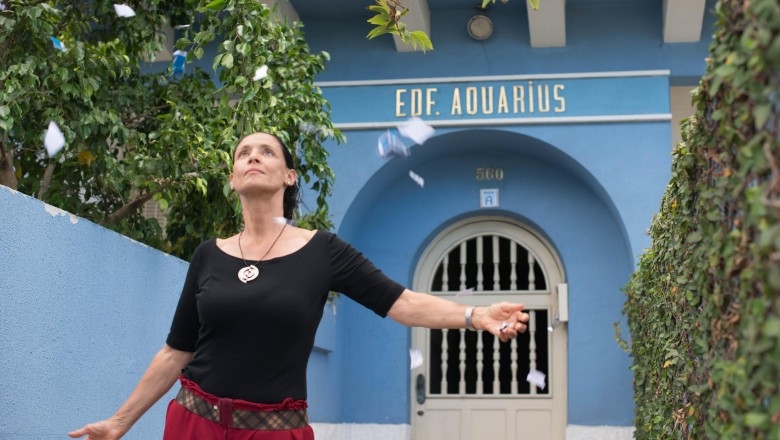
3. Certain Women (Kelly Reichardt) As it follows the stories of certain modern women in the great wide West, the film's feeling of emptiness and loneliness, the grays of those vast, barren spaces, seeps into your bones. There's some kind of quiet resilience at this movie's core. I'm haunted by the way Kristen Stewart looks at Lily Gladstone in that parking lot. A Reichardt film makes you realize how rarely we see people in movies who behave like, well, real people.
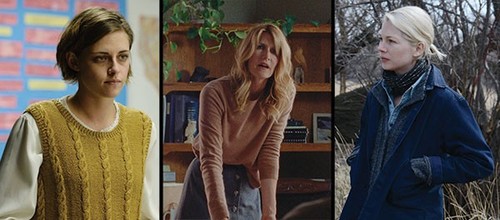
4. The Handmaiden (Chan Wook-Park) Measured debauchery. I marveled at the intricate narrative and the handsome photography boasted by this erotic revenge-drama/period romance. Extended coyness builds to giddy sexual discovery as three devious characters, two women and a man, swindle each other in a sumptuous mansion in Japanese-occupied Korea. As the seemingly innocent Lady Hideko, Kim Min-hee gave the second of two fine performances this year (see Right Now, Wrong Then below). There's always a secret flitting about those eyes, that smile. Kim Tae-ri and Ha Jung-woo round up this cast of scoundrels.
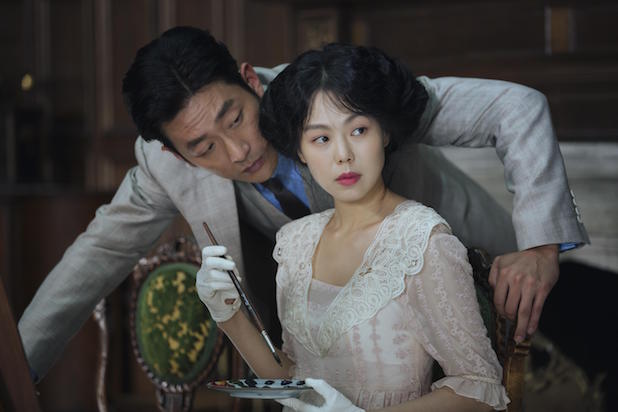
5. Aferim! (Radu Jude) From Romania comes an unforgettable vision from director Radu Jude: it's Wallachia, 1835, and the plague is on the land. Two comic characters--a blustering, pedantic constable and his pubescent son--cross the country on horseback, searching for a runaway Romani slave. The ending features an appalling act, but this was the only picture that did for me this year what Aleksei German's Hard To Be a God did last year: it created an entire world that somehow felt like an alien dimension even as it remained recognizable as a version of this one.

6. A Bigger Splash Luca Guadagnino's darkly atmospheric film features unforgettable work from Ralph Fiennes, Tilda Swinton, Matthias Schoenaerts and Dakota Johnson as a group of more or less corrupt characters whose latent passions bubble dangerously on the Sicilian island of Pantelleria. There's real joy in Fiennes' work as a dessicated rock 'n' roll manager. It's about food, sex, all that Italian stuff, as well as a certain kind of emotional larceny. "Environment is essential," Guadagnino told "T," the New York Times' style magazine. "I like anything that has to do with form and space. But I am also a humanist. That's the mixture." Even better than that, Guadagnino relates a great story. Years ago, when his dream of working with the sublime Swinton (long a personal favorite of mine, and his) came true, she said to him, "We are going to be partners in crime and the crime is cinema." Indeed! Here's some of the delicious fruit of that partnership.
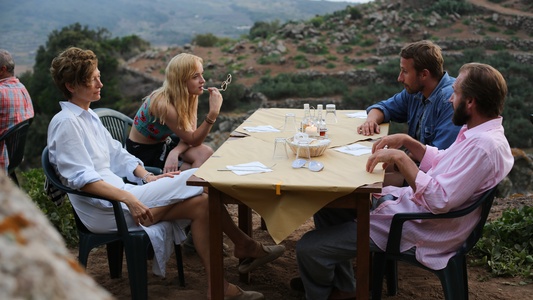
7. Elle (Paul Verhoeven) Funny: this was supposed to be controversial, yet it's been almost universally celebrated. This darkly satiric drama/thriller features a sly performance by the great Isabelle Huppert as a truly odd duck, a sadomasochistic rape victim who owns a company that makes video games involving loosely-veiled rape fantasies. Thinking about this movie's crazy sexual politics invites dialectical dizziness. Like nothing since the rape scene in Pulp Fiction, the film plays with shifts in power dynamics. By the end, this woman almost makes a writer want to put quotes around that word "victim."

8. Right Now, Wrong Then (Hong Sang-soo) For about an hour Hong Sang-soo tells a bittersweet story of a shy film director, in town a day early to speak at a rinky-dink film festival, who meets a girl (Kim Min-Hee, also tremendous as Lady Hideko in The Handmaiden). They spend the day together, visiting her apartment to see her paintings, going to a diner, getting drunk and visiting friends. Then, Hong retells the story for about another hour, from a subtly different angle. It's a simple story about the complexity of want and the simplicity of pleasure. Like the cinema of Éric Rohmer, it's about the human heart. As in Rohmer, Hong's film reveals nuances of friendship and love. It's about the reach for closeness and the falling short.
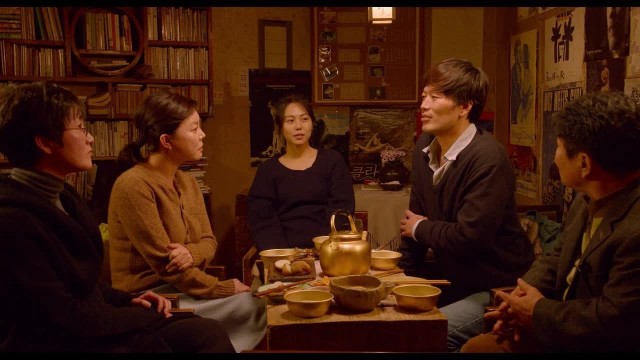
9. Cemetery of Splendor Apichatpong Weerasethakul's Zen dream surpasseth plot summary. If you like his work, you'll like this. You may have to be the kind of filmgoer who resonates with something "Joe" (the director's nickname from his days at the School of the Art Institute of Chicago) once said: "Sometimes you don't need to understand everything to appreciate a certain beauty." Somehow, a line from Sjón's novel From the Mouth of the Whale comes to mind as a review: "How is a dead man to tell the difference between himself and the living if he is still able to walk around, participate in fights, and run errands?"
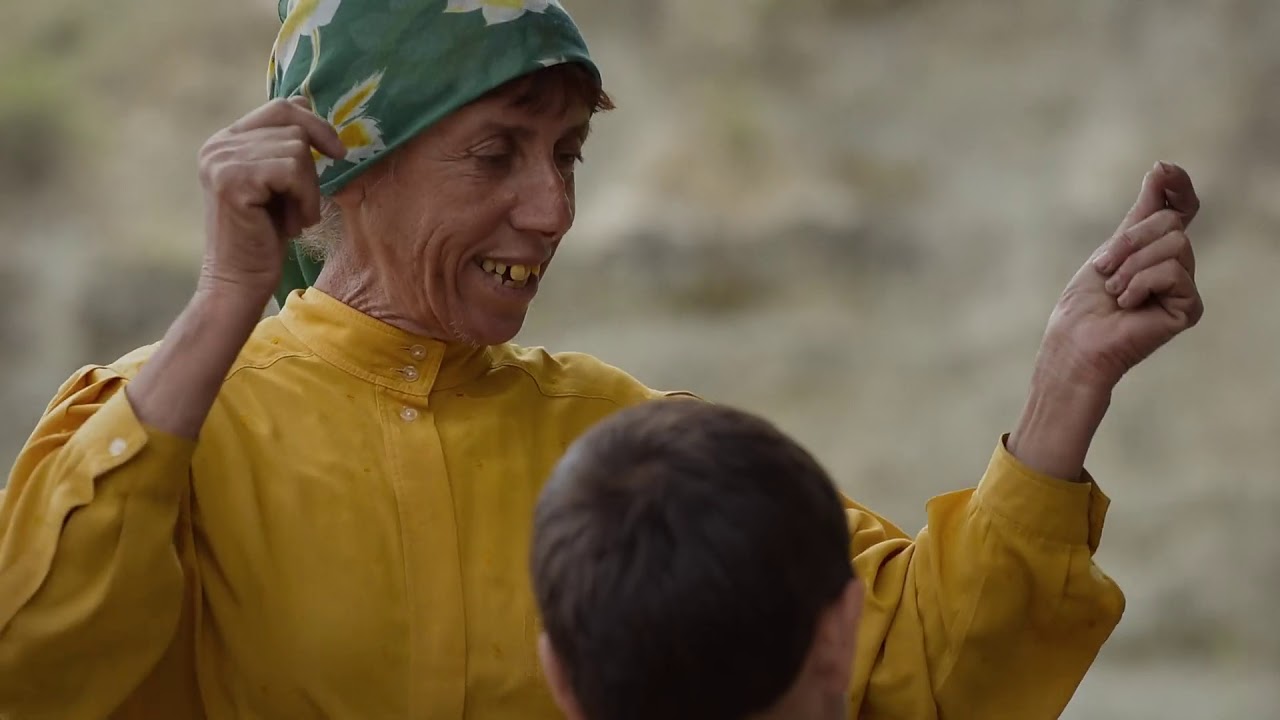
10. The Witch (Robert Eggers) With its Faustian themes, the movie touches on anxieties rooted deep in gothic-fable haunted, Puritan-based America. It's a nightmare about a budding girl in 17th-century, sin-fearing, Scarlet Letter-era New England. Witches and Satan ride with each other in the night, scuttling through the haunted woods. The young woman's nascent sexuality and power blooms through the cracks of her girlhood. Will she sign her name in Satan's book? A deal with the devil is the dream of being free. "Wouldst though like to live deliciously?"
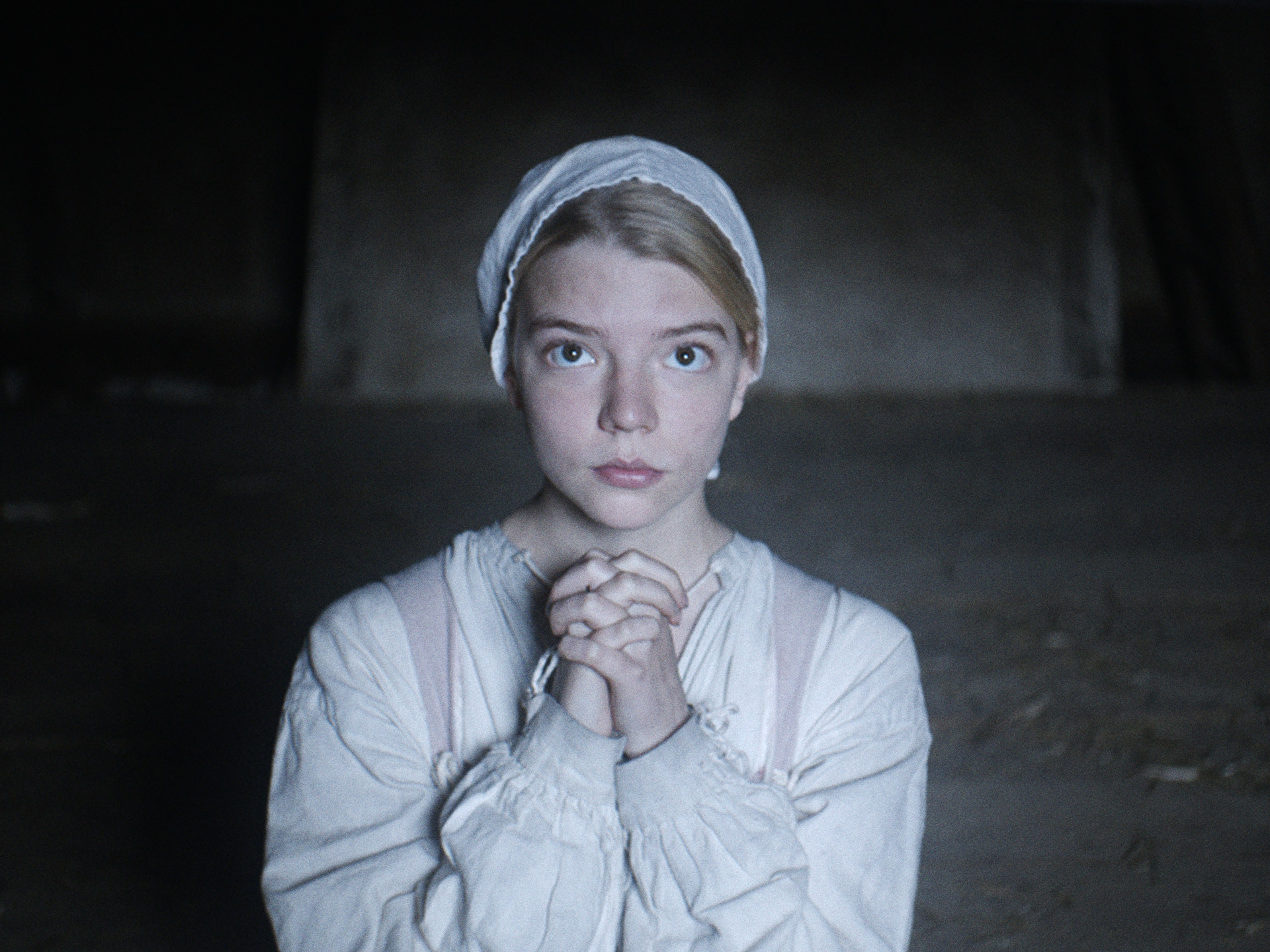
Top 10 Documentaries
1. No Home Movie
The final work from the great Chantal Akerman is about her lifelong quest for identity. Though no one ever truly knows why someone else commits suicide, as Akerman apparently did, we can surmise she never found a place where she could truly be comfortable in her skin. The film interweaves interviews with her dying mother, a survivor of Auschwitz, with footage of the undulating hillocks of the desert of Israel, taken from a train. "Mommy, tell me a story," Akerman says, by way of attempting to get her mother to stay awake. Her very long takes study the geography of her mother's apartment. She is interested in spatial and rhythmic tensions, and in visual and aural textures--hard reflective surfaces, the blacks and splashes of color found in shadows and windows, the way walls and other vertical forms create masking effects. It's quite a sensual experience. I think of the roar of the wind in the desert rushing over her mic, the hum of the seashore, the thrum of the train.
2. In Transit
The final film co-directed by legendary "direct cinema" pioneer Albert Maysles. It takes us aboard the Empire Builder train on its three-day journey from Chicago to the Pacific Northwest. We roll across the country in a kind of dream state, where time and space are suspended. Moving quietly between intimate moments of truth, Maysles' camera weaves a tapestry of Americans at turning points in their lives.
3. Lo and Behold: Reveries of the Connected World
Werner Herzog's meditative documentary on "one of the biggest revolutions we as human beings are experiencing": The Internet. Evolution or devolution? A flare from the sun, a hurricane, cyberwar: all could wreak havoc with the Internet, pitching civilization into chaos. Still, Herzog remains cheerful. After all, a company called Spacex is working on building ships to move humans to Mars. In my favorite moment, Herzog casts his eye across the beautiful skyline of Chicago. Noting that it appears "devoid of inhabitants," he muses that we must assume that everyone has left for Mars. Then, looking back on the city from the lakeside walkway leading to Adler Planetarium, he finds himself amongst "stragglers left behind": a group of monks in their orange robes, all gazing into their cell phones, as Elvis sings "Are You Lonesome Tonight" on the soundtrack.
4. Fire at Sea
A unique documentary by Gianfranco Rosi, a quiet work of humanism and a storehouse of powerful imagery. It's set on Lampedusa, an ancient, tiny Italian fishing island, which for years has been the gateway to Europe for hundreds of thousands of migrants from Nigeria, the Ivory Coast, Syria and points beyond.
5. Francofonia
The word “documentary” feels too prosaic for Alexander Sokurov's elegant French phantasmagoria about the Louvre and war.
6. The Illinois Parables In 11 sections, Deborah Stratman's experimental, cryptic essay limns a kind of imaginative atlas of Illinois cultural history. It's loosely organized around the theme of exodus. Much of it surveys the Southern tip of the state, casting a bird's eye view over all that flat wheat prairie land. Street signs now read "Trail of Tears," marking the road down which Native Americans were removed to the west of the Mississippi. In Golconda, Illinois we see a mural at the Trail of Tears' Ohio River crossing. (This, incidentally--or not--was also the border where Jim Crow once began and ended: a black person crossing the Ohio River into Cairo, Illinois was now in a "free" country). In Nauvoo, Illinois we visit the starting point of the Mormon Trail, over which Brigham Young led the exodus of his people to Salt Lake City in 1846. Demonic organ plays over a painting of the burning Mormon temple, then we cut to a shot of the rebuilt building today. We see headlines about mysterious fires in Macomb, Illinois, and a young woman burns a hole in the wall with her eyes. On the soundtrack, readings from Alexis de Tocqueville and Ralph Waldo Emerson's letter to President Van Buren float by. Expressionless men in suits illustrate audio from a press conference about the 1969 assassination of Fred Hampton by the Chicago police, using hand gestures as if they're in an airline PSA about buckling up. This segment is shot in the style of old black and white TV news footage, and the men move through a kind of stage-set blueprint of Hampton's apartment, constructed in a locker room. From the skies, newsreel footage surveys the endless destruction and terror wrought by the tornado of 1925 which devastated Southern Illinois--the deadliest tornado in U.S. history. We visit a field that was once a nuclear research site where sits, abandoned, "a graphite cake filled with uranium raisins." The mood is wintry and sad.
7. 13TH A powerfuly organized, cogently and devastatingly argued profile of the history of the criminalization of African-Americans in America. It unsparingly analyses a society that doubles down on its "war on crime," "war on drugs," and more and more prisons. Counter the European approach on just about every issue and you'll see how things are done in sane societies run in the interests of the people, as opposed to the wealthy and the powerful. But then, the prison-industrial complex and the obsessively race-based crimininalization of American life has been very, very good for the latter. Urgent viewing.
8. The Seasons In Quincy: Four Portraits of John Berger
A stimulating, moving four-part essay by Tilda Swinton, Colin MacCabe, Christopher Roth and Bartek Dziadosz about John Berger, whose book Ways of Seeing changed our relationship with art and culture. Berger is an art critic, drawer, storyteller, and, in the words of his great friend Swinton, radical humanist in the tradition of Spinoza. (He also co-wrote a film I treasure, Alain Tanner's 1975 comedy drama JONAH WHO WILL BE 25 IN THE YEAR 2000.) This documentary takes place in Quincy, a peasant village in a valley of the French Alps where he moved in 1973 with his wife, Beverly. There is a vision of "the good life" here—of physical work and the intimate harmony of man and nature.
A stimulating, moving four-part essay by Tilda Swinton, Colin MacCabe, Christopher Roth and Bartek Dziadosz about John Berger, whose book Ways of Seeing changed our relationship with art and culture. Berger is an art critic, drawer, storyteller, and, in the words of his great friend Swinton, radical humanist in the tradition of Spinoza. (He also co-wrote a film I treasure, Alain Tanner's 1975 comedy drama JONAH WHO WILL BE 25 IN THE YEAR 2000.) This documentary takes place in Quincy, a peasant village in a valley of the French Alps where he moved in 1973 with his wife, Beverly. There is a vision of "the good life" here—of physical work and the intimate harmony of man and nature.
9. Maya Angelou: And Still I Rise This inspiring film complicates Angelou beyond the courtly figure we know. Her poetry readings can be emotionally overwhelming. Written across her visage is fathomless pain. Then the storm breaks and, like the sun coming out, she flashes that great grin, toothy and defiant. The filmmakers shape often-riveting rare footage with an eye for the untold story, the telling image. What emerges is a portrait of someone who loved to laugh and was deeply serious at the same time. If at times its burnished approach threatens to immobilize its subject in amber, Angelou herself—so soulful, and, really, such a pip—never lets that happen.
10. Kate Plays Christine A thought-provoking (and just plain provoking) work of art by Robert Greene featuring actress Kate Lyn Sheil preparing to play Christine Chubbuck, the newscaster who shot herself to death on live TV in 1974. It's an intensely ruminative process for Sheil. The movie is about people who choose a career in front of cameras, and their drive to be seen and recognized. It's a provocation that means to put us on the spot--not just us in the audience, but even Greene himself. The ground where fiction and nonfiction blur and overlap is such a rich vein for cinema, and Greene is doing it as provocatively as anyone.
Other noteworthy features:
* Wiener-Dog Todd Solondz (Happiness, Storytelling, Palindromes) is a purveyor of singularly dark comedies which he insists have a "moral center" even as "the act of laughing becomes a moral dilemma." His droll Wiener-Dog is one of his best. His perambulating little Wiener-Dog takes life as it comes, just like Robert Bresson's soulful donkey did in Au Hasard Balthazar. An innocent animal throws humanity's flaws and weaknesses into relief; The Family Fang Directed by Jason Bateman, this is an autumnal, bittersweet comedy about a sister and brother in middle-age, and the bond forged between them in the crucible of being raised by radical performance artists. Even as seniors, their parents still wage war-by-prank on the complacencies of capitalist/consumer society, though the culture has long since absorbed all such resistance. The Family Fang has a mystery plot, but it's wise enough to know that the real mystery is the human beings we love, who shaped our lives in ways too complicated to untangle; La La Land Damien Chazelle's musical romantic comedy means to be a joy, and is; Little Men It's about two boys' friendship against the backdrop of their parents' feud over gentrification in a New York neighborhood. Director Ira Sachs cited influences like Pialat and Ozu's "kids on strike" pictures; Under the Shadow Classic haunted-house movie tropes take on cultural specificity in Babak Anvari's Iranian horror film, in which Narges Rashidi's eyes telegraph bone-deep anxiety, fear and weariness; Wondrous Boccaccio This was Paoli Taviani and Vittorio Taviani's playful, vivid adaptation of a handful of tales from the Decameron. It’s Florence in 1348, the days of the Black Death. A group of young men and women hole up and, to pass the time, they tell each other stories. Some are comic, some tragic, and some just dirty jokes (in fact, this could use a bit more of the ribaldry of the Pasolini version). We humans don’t change fundamentally down the centuries, and this film is forgiving of what we are. My favorite line could also be its motto: "Try and enjoy yourselves as much as you can."; Swiss Army Man What a strange, jejune, original, exuberant movie from "the Daniels" (Daniel Kwan and Daniel Scheinert). It's a magic-realist comedy/adventure about two guys trying to survive on a deserted island--only one of them's already a corpse. Positing a boner as the life force, the movie feels like it was made for the personal amusement of the people working on it, without worrying much about whether audiences would come along for the ride. For me, one of the year's unforgettable images is Hank (Paul Dano) riding Manny (Daniel Radcliffe) through the water like a jet ski, propelled by Manny's farts; L'Attessa Piero Messina's moving film boasted a fine performance by Juliette Binoche and made spine-tinglingly good use of Leonard Cohen's "Waiting for a Miracle"; Sunset Song Terence Davies was on a role, making two beautiful films this year. This was his exquisite, soulful, painful adaptation of the novel by Lewis Grassic Gibbon, with Agyness Deyn as the warm-blooded, reflective, gangly daughter of a monstrous farmer. The scene in which she sings a wedding song was one of the year's most enchanted. Next year will see the release of his A Quiet Passion, with Cynthia Nixon is the fiercely agnostic, independent Emily Dickinson. It's another film of charged quiet and candelit interiors where worlds of inner emotion swim. Believe it or not, its really funny as well, its bon mots truly bon; Hunt for the Wilderpeople Taika Waititi's tale of unlikely folk heroes. Chubby juvenile delinquent Ricky Baker (Julian Dennison) is a "real bad egg," in the opinion of the evil social-services agent who dumps him at his foster home on the edge of the New Zealand bush. Soon, he's trying to outrun a manhunt with his foster dad Hec (a crusty, laconic Sam Neill, salty and great). I saw this three times in 2016 and it was just as fresh and funny every time. Splendid use of Nina Simone"s "Sinnerman" and dramatic deployment of Leonard Cohen's "The Partisan"; Sing Street To restore your faith in humanity, see John Carney's joyful coming-of-age romance about aspiring teenage singer/songwriters in the Dublin of 1985. A 16-year-old boy (Ferdia Walsh-Peelo) forms a band with his friend (Mark McKenna), who likes to carry a bunny, and woos "the girl with mysterious eyes" (Kelly Thornton) against a backdrop of various forms of adult abuse and neglect. His hero, mentor and guiding cultural critic is his troubled older brother (Jack Reynor). I can't think of a film that made Karolyn and me happier this year; Lemonade (Beyoncé Knowles-Carter and Kahlil Joseph, 2016) Beyoncé made a striking experimental "visual album" with political synedoches and imagery seemingly influenced by the likes of Matthew Barney, Stanley Kubrick, Julie Dash and Terrence Malick; Everybody Wants Some!! I'm not sure it would make my top 10 Richard Linklater films (okay, maybe just), but it's still warm, funny and smart; Green Room Jeremy Saulnier's nightmare, in which a young band finds itself trapped in a Nazi punk nightclub takes us into the belly of the "alt-right" white-supremacist culture energized by the rise of Donald Trump; The Happiest Day in the Life of Olli Mäki Juho Kuosmanen's first feature, touching and true, wise and warm, is a naturalistic, verité style black-and-white boxing film/love story. It's the story of the lead-up to Olli Mäki's (Jarkko Lahti) fight against Davey Moore in Helsinki in 1962 for the world featherweight championship. The American was defending his title; the modest, scrappy Olli was Finland's rather reluctant contender, with no appetite for the hype of himself as a national hero. The radiant Oona Airola is the heart of the film as the good-humored, playful woman with whom he falls in love. It's about image construction and the true meaning of happiness; The Conjuring 2 A smart, humanistic horror picture. Ghosts torment a family in a working-class suburb of London. Its heart is the relationship of real-life couple the Warrens, a "demonologist" (Patrick Wilson) and a seer (Vera Farmiga). Director James Wan portrays them as utterly sincere and guileless. (In other words, he believes that they actually believe in ghosts.) These ghostbusters show what a marriage looks like as a partnership of equals. The fact that they're middle-American and Christian, as well as resourceful and intelligent, makes them, in a way, the rare Hollywood sympathetic portrait of Red State-types. You can also enjoy it for the way Wan moves the camera, his negotiation of tension and release, and how good he is with space. Things to Come Mia Hansen-Løve's wise film with Isabelle Huppert is all about questions of how to think and act ethically and morally. She's a tough-minded, well-liked philosophy professor of a certain age, exploring the silver linings of being cut loose.
Other noteworthy documentaries: Bill Evans/Time Remembered (Bruce Spiegel's stirring, haunting homage to the great pianist/composer); Weiner; Abacus: Small Enough to Jail; Miss Sharon Jones!; Sonita; Hooligan Sparrow; Two Trains Runnin'; Journey Through French Cinema; From This Day Forward; Ingrid Bergman: In Her own Words; Life, Animated
Best Blu-ray release: Pioneers of African-American Cinema
Kino/Lorber's box set curated by Jacqueline Stewart, a professor at the University of Chicago, is one of the cultural events of our time.
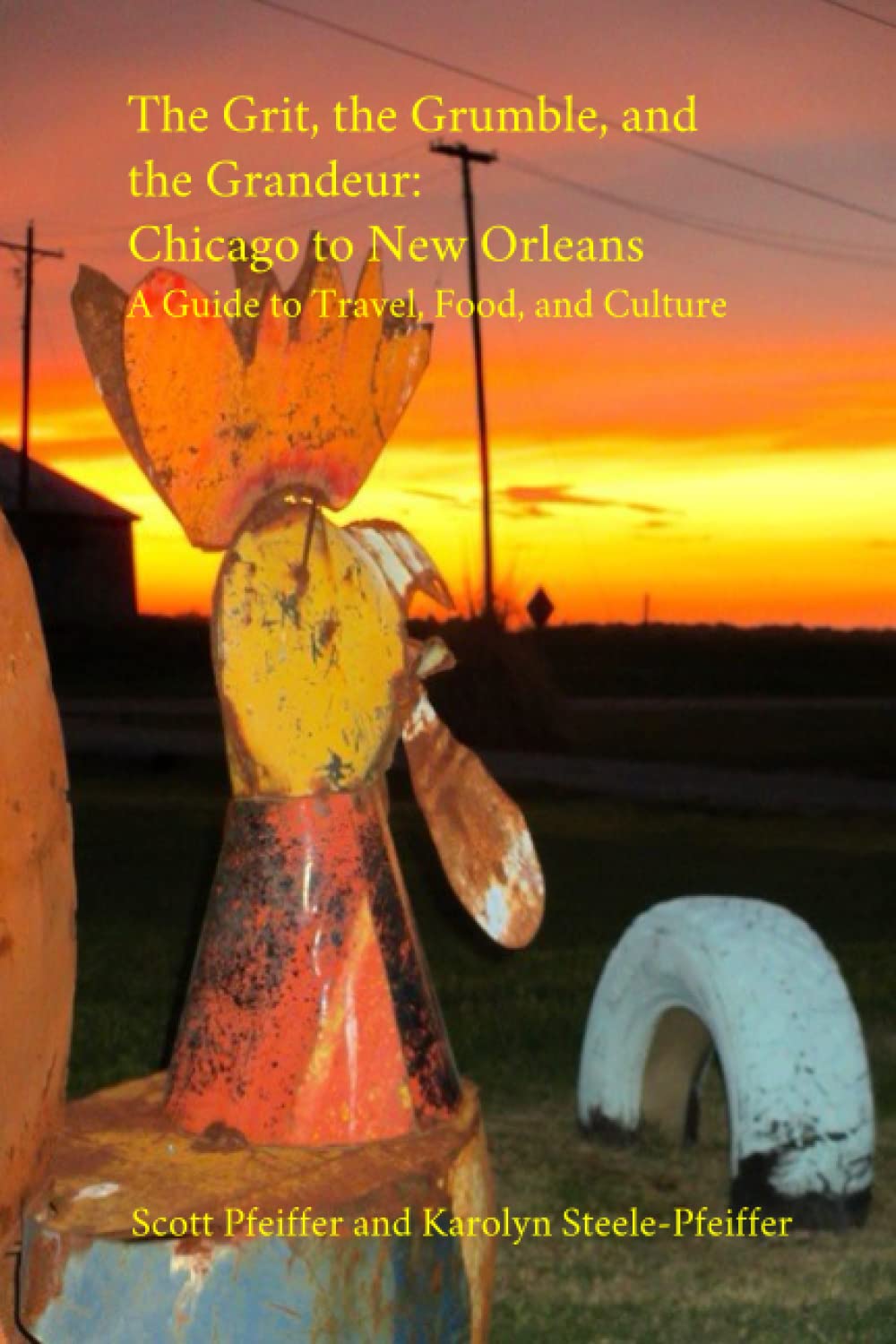


Reader Comments